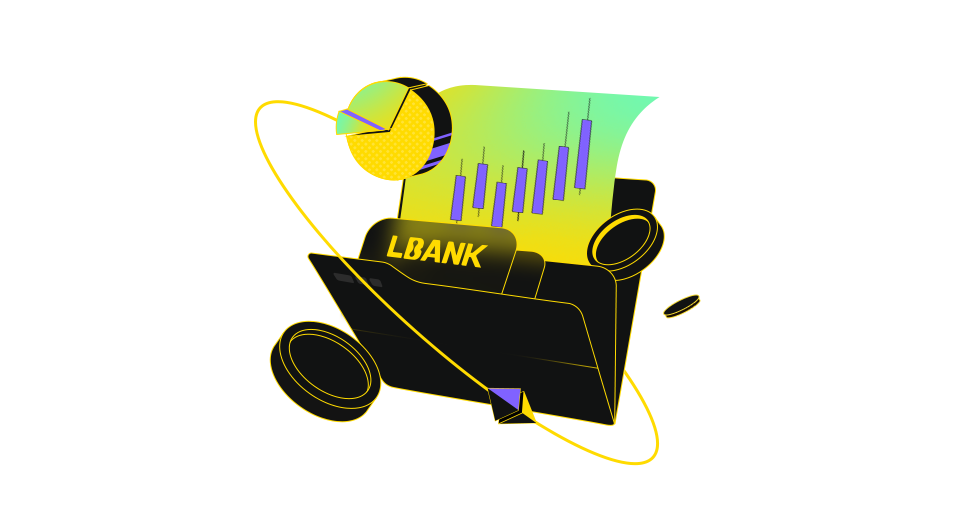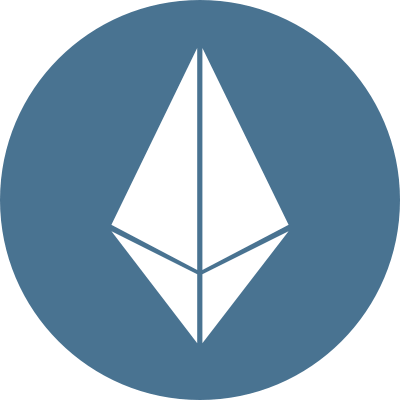How does Solana (SOL) compare to other high-performance layer-1 blockchains in the market?
2025-04-18
Beginners Must Know
"Exploring Solana's Unique Advantages Among Leading High-Performance Layer-1 Blockchains."
Solana (SOL) vs. Other High-Performance Layer-1 Blockchains: A Detailed Comparison
The blockchain industry has seen rapid growth, with multiple layer-1 platforms competing to offer the best combination of speed, scalability, and security. Among these, Solana (SOL) has emerged as a standout due to its high-performance capabilities. But how does Solana compare to other leading layer-1 blockchains like Ethereum, Binance Smart Chain, Polkadot, and Cosmos? This article provides an in-depth analysis of their key features, strengths, and weaknesses.
Understanding Solana
Solana is an open-source, decentralized blockchain platform founded in 2017 by Anatoly Yakovenko and his team. It is designed to support fast, scalable, and secure transactions, making it ideal for decentralized finance (DeFi), non-fungible tokens (NFTs), and gaming applications.
Key Features of Solana:
- Proof of History (PoH): A unique consensus mechanism that combines Proof of Stake (PoS) with Byzantine Fault Tolerance (BFT) to enhance transaction speed and efficiency.
- Turbine Architecture: Enables high throughput, supporting up to 65,000 transactions per second (TPS).
- Smart Contracts: Written in Rust and compiled to WebAssembly (WASM), Solana’s smart contracts are efficient and developer-friendly.
- Growing Ecosystem: Hosts popular dApps like Serum (a decentralized exchange) and Orca (a liquidity protocol).
Comparison with Other High-Performance Layer-1 Blockchains
1. Ethereum (ETH)
Ethereum is the most widely used blockchain for smart contracts and dApps. However, it faces challenges in scalability and high gas fees.
Key Differences:
- Speed: Ethereum processes about 15 TPS, while Solana handles up to 65,000 TPS.
- Scalability: Ethereum is transitioning to Ethereum 2.0, which includes sharding and PoS, but Solana already offers superior scalability.
- Fees: Solana’s transaction fees are significantly lower than Ethereum’s, especially during peak usage.
2. Binance Smart Chain (BSC)
BSC is a blockchain developed by Binance, offering low fees and fast transactions.
Key Differences:
- Speed: BSC supports around 2,000 TPS, which is faster than Ethereum but slower than Solana.
- Security: BSC has faced security breaches, including a major hack in 2021, raising concerns about its robustness.
- Centralization: BSC is more centralized compared to Solana, as it relies on a smaller number of validators.
3. Polkadot (DOT)
Polkadot focuses on interoperability, allowing different blockchains to communicate seamlessly.
Key Differences:
- Interoperability: Polkadot’s cross-chain capabilities are unmatched, but Solana excels in raw transaction speed.
- Scalability: Polkadot uses parachains to improve scalability, but Solana’s PoH gives it an edge in throughput.
- Use Cases: Polkadot is ideal for projects requiring cross-chain functionality, while Solana is better suited for high-speed applications like DeFi and gaming.
4. Cosmos (ATOM)
Cosmos is another blockchain emphasizing interoperability, with a modular framework for building custom blockchains.
Key Differences:
- Interoperability: Like Polkadot, Cosmos enables blockchain communication, but Solana prioritizes performance.
- Consensus Mechanism: Cosmos uses Tendermint Core, which is efficient but doesn’t match Solana’s PoH in speed.
- Adoption: Solana has seen faster adoption in DeFi and NFTs, while Cosmos is popular among projects needing modularity.
Recent Developments in Solana
Solana’s ecosystem has expanded significantly, with notable projects like Serum, Orca, and Magic Eden (an NFT marketplace). However, it has also faced challenges:
- Security: The 2021 Wormhole bridge hack exposed vulnerabilities in cross-chain solutions.
- Network Congestion: High demand has occasionally led to slower transaction times, highlighting scalability limits.
Potential Challenges and Competition
The layer-1 blockchain space is highly competitive. Key challenges for Solana include:
- Market Competition: New and existing blockchains are constantly improving, threatening Solana’s market share.
- Regulatory Uncertainty: Evolving regulations could impact adoption and usage.
- Energy Consumption: High-performance blockchains like Solana must address environmental concerns.
Conclusion
Solana stands out among high-performance layer-1 blockchains due to its unparalleled speed and scalability. While Ethereum, BSC, Polkadot, and Cosmos offer unique advantages—such as interoperability and lower fees—Solana’s focus on high throughput makes it a top choice for developers and users prioritizing speed. However, challenges like security risks and network congestion must be addressed to maintain its competitive edge.
Key Takeaways:
- Solana’s Proof of History enables faster transactions than Ethereum, BSC, Polkadot, and Cosmos.
- Ethereum 2.0 and other upgrades may narrow the performance gap in the future.
- Security and decentralization remain critical factors for long-term success.
As the blockchain landscape evolves, Solana’s ability to innovate and adapt will determine its position among the leading layer-1 platforms.
The blockchain industry has seen rapid growth, with multiple layer-1 platforms competing to offer the best combination of speed, scalability, and security. Among these, Solana (SOL) has emerged as a standout due to its high-performance capabilities. But how does Solana compare to other leading layer-1 blockchains like Ethereum, Binance Smart Chain, Polkadot, and Cosmos? This article provides an in-depth analysis of their key features, strengths, and weaknesses.
Understanding Solana
Solana is an open-source, decentralized blockchain platform founded in 2017 by Anatoly Yakovenko and his team. It is designed to support fast, scalable, and secure transactions, making it ideal for decentralized finance (DeFi), non-fungible tokens (NFTs), and gaming applications.
Key Features of Solana:
- Proof of History (PoH): A unique consensus mechanism that combines Proof of Stake (PoS) with Byzantine Fault Tolerance (BFT) to enhance transaction speed and efficiency.
- Turbine Architecture: Enables high throughput, supporting up to 65,000 transactions per second (TPS).
- Smart Contracts: Written in Rust and compiled to WebAssembly (WASM), Solana’s smart contracts are efficient and developer-friendly.
- Growing Ecosystem: Hosts popular dApps like Serum (a decentralized exchange) and Orca (a liquidity protocol).
Comparison with Other High-Performance Layer-1 Blockchains
1. Ethereum (ETH)
Ethereum is the most widely used blockchain for smart contracts and dApps. However, it faces challenges in scalability and high gas fees.
Key Differences:
- Speed: Ethereum processes about 15 TPS, while Solana handles up to 65,000 TPS.
- Scalability: Ethereum is transitioning to Ethereum 2.0, which includes sharding and PoS, but Solana already offers superior scalability.
- Fees: Solana’s transaction fees are significantly lower than Ethereum’s, especially during peak usage.
2. Binance Smart Chain (BSC)
BSC is a blockchain developed by Binance, offering low fees and fast transactions.
Key Differences:
- Speed: BSC supports around 2,000 TPS, which is faster than Ethereum but slower than Solana.
- Security: BSC has faced security breaches, including a major hack in 2021, raising concerns about its robustness.
- Centralization: BSC is more centralized compared to Solana, as it relies on a smaller number of validators.
3. Polkadot (DOT)
Polkadot focuses on interoperability, allowing different blockchains to communicate seamlessly.
Key Differences:
- Interoperability: Polkadot’s cross-chain capabilities are unmatched, but Solana excels in raw transaction speed.
- Scalability: Polkadot uses parachains to improve scalability, but Solana’s PoH gives it an edge in throughput.
- Use Cases: Polkadot is ideal for projects requiring cross-chain functionality, while Solana is better suited for high-speed applications like DeFi and gaming.
4. Cosmos (ATOM)
Cosmos is another blockchain emphasizing interoperability, with a modular framework for building custom blockchains.
Key Differences:
- Interoperability: Like Polkadot, Cosmos enables blockchain communication, but Solana prioritizes performance.
- Consensus Mechanism: Cosmos uses Tendermint Core, which is efficient but doesn’t match Solana’s PoH in speed.
- Adoption: Solana has seen faster adoption in DeFi and NFTs, while Cosmos is popular among projects needing modularity.
Recent Developments in Solana
Solana’s ecosystem has expanded significantly, with notable projects like Serum, Orca, and Magic Eden (an NFT marketplace). However, it has also faced challenges:
- Security: The 2021 Wormhole bridge hack exposed vulnerabilities in cross-chain solutions.
- Network Congestion: High demand has occasionally led to slower transaction times, highlighting scalability limits.
Potential Challenges and Competition
The layer-1 blockchain space is highly competitive. Key challenges for Solana include:
- Market Competition: New and existing blockchains are constantly improving, threatening Solana’s market share.
- Regulatory Uncertainty: Evolving regulations could impact adoption and usage.
- Energy Consumption: High-performance blockchains like Solana must address environmental concerns.
Conclusion
Solana stands out among high-performance layer-1 blockchains due to its unparalleled speed and scalability. While Ethereum, BSC, Polkadot, and Cosmos offer unique advantages—such as interoperability and lower fees—Solana’s focus on high throughput makes it a top choice for developers and users prioritizing speed. However, challenges like security risks and network congestion must be addressed to maintain its competitive edge.
Key Takeaways:
- Solana’s Proof of History enables faster transactions than Ethereum, BSC, Polkadot, and Cosmos.
- Ethereum 2.0 and other upgrades may narrow the performance gap in the future.
- Security and decentralization remain critical factors for long-term success.
As the blockchain landscape evolves, Solana’s ability to innovate and adapt will determine its position among the leading layer-1 platforms.
Related Articles
How are RWAs different from traditional financial assets?
2025-05-22 10:16:47
How does DeFi differ from traditional finance systems?
2025-05-22 10:16:47
Can you elaborate on how equitable distribution is achieved in the new tokenomic model?
2025-05-22 10:16:46
What implications does this collaboration have for blockchain gaming acceptance?
2025-05-22 10:16:46
How does U.S. Steel Corporation's performance compare to its competitors in light of the new price target?
2025-05-22 10:16:46
Are there fees associated with different deposit methods on Binance?
2025-05-22 10:16:45
How complex are DeFi protocols involved in yield farming as mentioned in the research news about CoinGecko's Earn Platform?
2025-05-22 10:16:45
How important does Buterin consider institutional adoption of cryptocurrencies?
2025-05-22 10:16:45
What types of insights or findings should be highlighted during the analysis of news articles?
2025-05-22 10:16:44
What role do stablecoins play in facilitating transactions within the cryptocurrency ecosystem?
2025-05-22 10:16:44
Latest Articles
How does DeFi differ from traditional finance systems?
2025-05-22 10:16:47
How are RWAs different from traditional financial assets?
2025-05-22 10:16:47
Can you elaborate on how equitable distribution is achieved in the new tokenomic model?
2025-05-22 10:16:46
What implications does this collaboration have for blockchain gaming acceptance?
2025-05-22 10:16:46
How does U.S. Steel Corporation's performance compare to its competitors in light of the new price target?
2025-05-22 10:16:46
How complex are DeFi protocols involved in yield farming as mentioned in the research news about CoinGecko's Earn Platform?
2025-05-22 10:16:45
Are there fees associated with different deposit methods on Binance?
2025-05-22 10:16:45
How important does Buterin consider institutional adoption of cryptocurrencies?
2025-05-22 10:16:45
What is Mashinsky's perspective on the role of self-regulation within the crypto industry?
2025-05-22 10:16:44
What role do stablecoins play in facilitating transactions within the cryptocurrency ecosystem?
2025-05-22 10:16:44

Limited-Time Offer for New Users
Exclusive New User Benefit, Up to 6000USDT
Hot Topics
Technical Analysis

1606 Articles
DeFi

90 Articles
MEME

62 Articles
Cryptocurrency Rankings
Top
New Spot
Expand
Fear and Greed Index
Reminder: Data is for Reference Only
73
Greed





